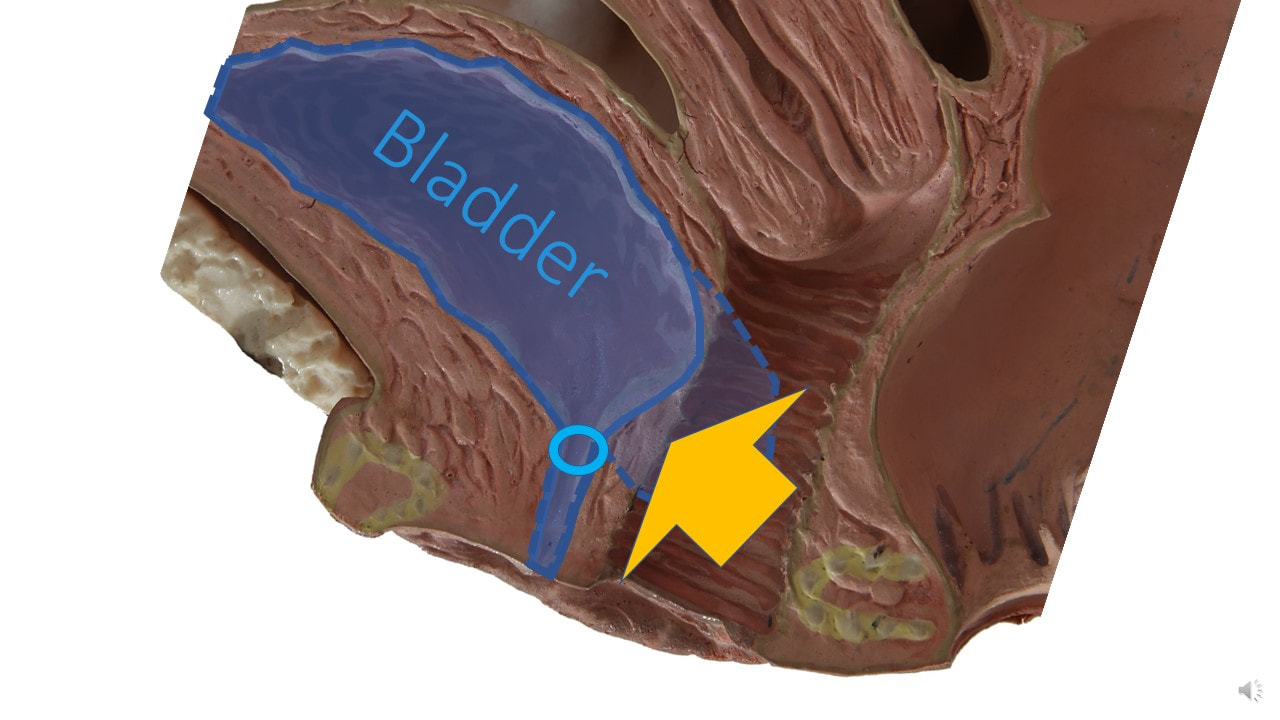Urinary leakage is also called urinary incontinence. There are several types of urinary incontinence. Each type has specific treatments that work best. Many women have more than one type.
The video explains the anatomy of the different types of incontinence. It also shows the difference between vaginal rejuvenation and urinary incontinence treatments. They are not the same thing at all.
A side view of the pelvis shows the normal position of the pelvic organs in the standing position.
The anterior vaginal wall supports the bladder directly.
A dropped bladder is called a cystocele. It happens when the anterior vaginal wall is damaged and no longer supports the bladder adequately. This damage most commonly occurs during vaginal childbirth. The damaged area bulges into the vaginal canal and is common cause of urinary incontinence. A less common source of incontinence is damage to urethral sphincter (light blue circle) which serves as a valve.
Management of a dropped bladder and incontinence due to a dropped bladder (stress incontinence) involves supporting the bulging area with either a vaginal insert (called a pessary) or surgery (cystocele repair with or without a sling).





